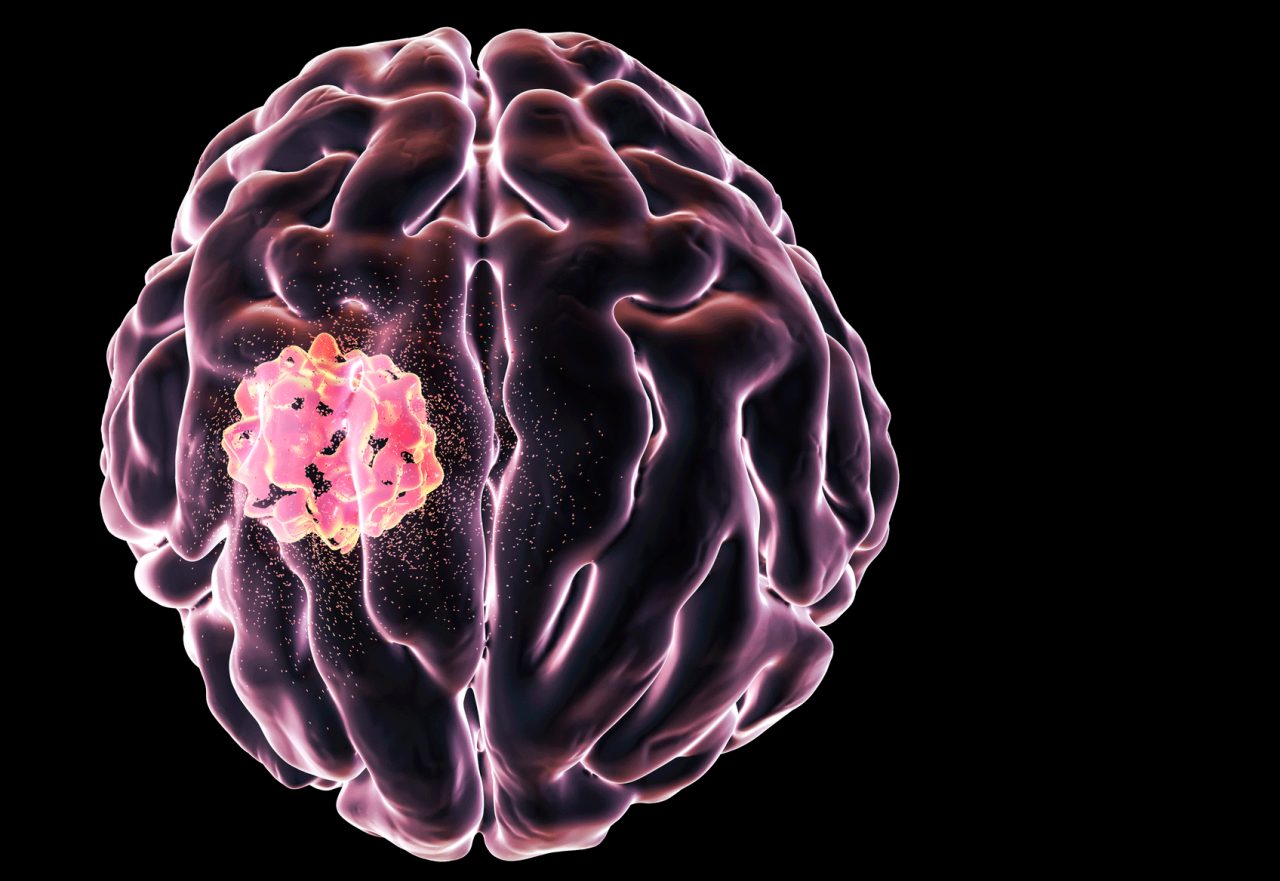Types of Brain Tumors

There are more than 120 types of brain tumors, including primary and secondary (or metastatic) brain tumors. Here’s what you should know.
Many brain tumors are usually benign. Nearly one in four patients with cancer, however, will develop a metastatic brain cancer.
Symptoms of brain tumors include strong headaches, blurred vision, loss of balance, confusion, and seizures. Some cases produce no symptoms.
YOU MIGHT ALSO LIKE: Our Brain and Nerve Care section
Primary brain tumors
Primary brain tumors start in the brain. They are named by the type of brain tissue in which they are found. More than a third of all brain tumors arise in the meninges, the outer three layers of tissue that protects your brain just under your skull. Most meningiomas are noncancerous and grow slowly.
About a third of all brain tumors are gliomas, which begin in the glial, or supportive, tissue of your brain. These can vary from benign to cancerous. This chart classifies different types of brain tumors and what is typical for each kind.
Tests for brain tumors
- Neurological exam. This will test different parts of your body for functionality. The exam does not detect brain tumors but can help your doctor determine which part of your brain is having a problem.
- Head CT scan. This test can detect problems in and around your brain.
- Brain MRI. This imaging test shows better pictures of your brain than other tests do.
- PET Scan. This test uses a radioactive tracer that is injected to a vein. It travels through your blood and attaches to brain cells, standing out in pictures. It helps detect brain tumors that grow quickly.
A surgeon can also collect a sample of tissue in your brain, send it to a lab for testing, and determine whether your tumor is cancerous or benign.
Types of brain tumors
- Astrocytomas. These tumors, or gliomas, come from small star-shaped cells called astrocytes. They can grow anywhere in your brain or spinal cord. One form is pilocytic astrocytoma, a benign tumor most common in young adults or children. It can be removed surgically. In adults, astrocytomas usually occur in the cerebrum. In children, they occur in the cerebellum, cerebrum, and brain stem. Most astrocytomas spread into nearby normal brain tissue and are very hard to cure with surgery. Glioblastomas are a type of astrocytoma that tend to grow very quickly.
- Brain stem gliomas. These tumors of the brain stem are more common in children than in adults. Because the brain stem controls many important functions, such as breathing and heart rate, these tumors usually cannot be removed with surgery.
- Ependymomas. These tumors start in cells that line the ventricles (fluid-filled spaces within your brain). They usually do not grow into nearby brain tissue, which means they can sometimes be cured with surgery.
- Oligodendrogliomas. These tumors start in cells that make myelin, the fatty substance that surrounds nerve cells. Like astrocytomas, these tumors tend to spread into nearby normal brain tissue and are very hard to cure with surgery.
- Optic nerve gliomas. These tumors occur in or around the nerve that sends messages from your eyes to your brain. They can cause vision changes or hormonal changes (due to their location near the pituitary gland).
- Primitive Neuroectodermal Tumors (PNETS). These tumors occur more often in children and can occur anywhere in your brain in the primitive form of nerve cells. One type is the medulloblastoma.
- Medulloblastomas. These tumors start in primitive forms of nerve cells and are found in the cerebellum. This is the most common malignant brain tumor in children, usually occurring between ages 5 and 9. They tend to grow and spread quickly, but they can often be treated.
- Tumors of the pineal gland. These tumors grow in and around the pineal gland, a tiny organ near the center of your brain. The tumors can grow slowly, called pineocytoma, or grow quickly, called pineoblastoma.
- Pituitary tumors. These tumors start in the pituitary gland at the base of your brain. They are usually benign, but they can cause serious symptoms because of their location and because they sometimes secrete excess hormones. They commonly affect people in their 30s or 40s and generally can be treated successfully.
- Craniopharyngiomas. These tumors start near the pituitary gland. They usually grow slowly but can cause symptoms if they press on the pituitary or on nearby nerves.
- Schwannomas. These tumors start in myelin-making cells that surround certain nerves. They are most common in the nerve in your inner ear that helps with balance, in which case the tumor is called a vestibular schwannoma or an acoustic neuroma. These tumors are usually benign.
- Meningiomas. These tumors start in the outer linings of your brain and spinal cord. They are more common in adults. Most meningiomas can be removed with surgery, although some may come back.
- Primary central nervous system lymphomas. Primary central nervous system lymphoma is an aggressive, rare type of tumor derived from lymphocytes, a type of immune cell. It is more common in people with a disease of the immune system, such as AIDS. But they can also occur in otherwise healthy individuals.
Secondary brain tumors
Secondary brain tumors are also known as metastatic brain tumors. These are cancers that start in another organ and travel to the brain. In adults, secondary brain tumors are more common than primary brain tumors.
Cancer in the brain that has spread from other cancers is not considered brain cancer. They are still the same type of cancer as where they started.
For instance, lung cancer that has spread to your brain isn’t called brain cancer; it is called metastatic lung cancer.
Typical cancers that spread to the brain include:
- Lung cancer
- Breast cancer
- Melanoma
- Lymphoma
- Kidney cancer
- Germ cell cancer
Updated:
March 20, 2023
Reviewed By:
Janet O'Dell, RN